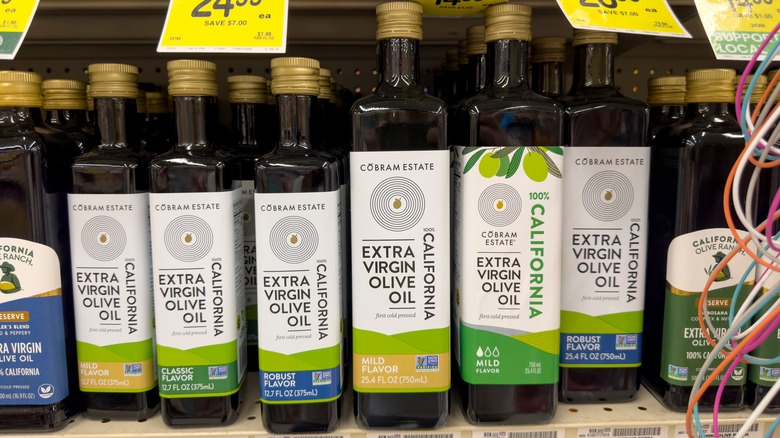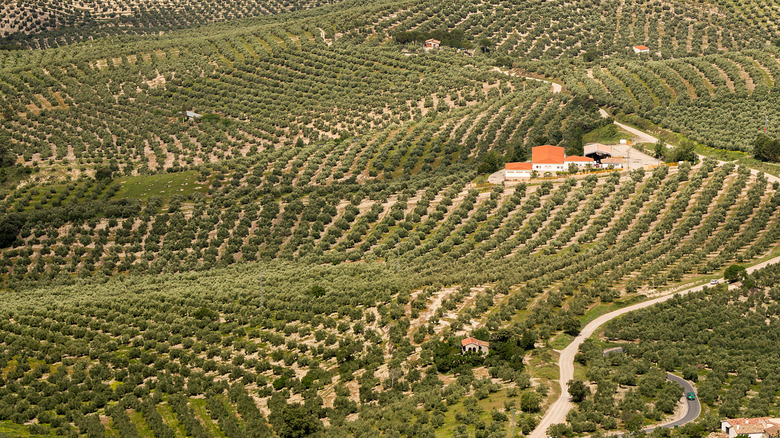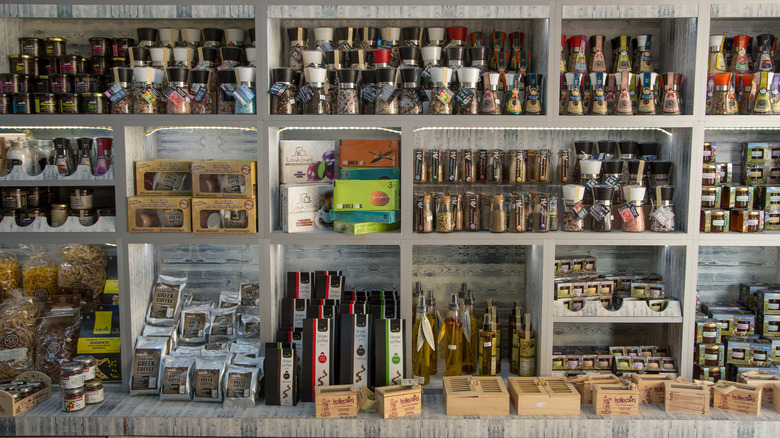Why Olive Oil From Other Countries Tastes Different
Olive oil has been around for millennia. Even the ancient Greek poet Homer called it "liquid gold" in his famous epic, "Iliad," And centuries later, Hippocrates, widely regarded as the father of medicine, hailed it for its healing properties and used it for everything from pain relief to fertility treatments.
While we may not use olive oil in the same way as Hippocrates did, it's hard to imagine preparing a delicious bowl of spaghetti aglio e olio and using any other vegetable fat instead. It's also impossible to think of baking that delicious rosemary focaccia without pouring in a generous amount of olive oil to make the edges perfectly golden and crisp. And to move outside the kitchen, some even suggest that taking olive oil shots before drinking can actually stop hangovers.
It's safe to say that olive oil is a kitchen essential. But why do some vary so much in taste and aroma? Well, aside from the fact that there are more than a thousand varieties of olives (each unique on their own), they're actually grown across 29 different countries worldwide. If you're wondering how this might affect the flavor, it's important to understand that, much like wine, the terroir plays a massive role in shaping the oil's distinct taste. That's what sets Californian, Italian, Spanish and Greek olive oils apart.
What makes California olive oil special?
The Golden State may not yet match the dominance of Europe's olive oil powerhouses, but it's slowly pacing its way forward in the market, having tripled its production over the past couple of decades. Now, California is massive — it stretches across a whopping 163,696 square miles. And that's why it's no wonder that its olive oils boast a wide range of flavor profiles. While some of them are light in both taste and color, with fruity or nutty undertones, others have a bolder taste and quite often are peppery or buttery. It all depends on where the olives were grown, what time they were harvested, and naturally, which cultivars were used, with the most popular ones being Sevillano, Arbequina, Maurino, Leccino, and Picual.
According to the California Olive Oil Council (COOC), there are over 400 olive oil producers in the state, with California Olive Ranch being the largest in the whole country. There are more than 75 different olive varieties cultivated in California.
What's the secret behind Spain's olive oil?
The Spanish take their olive oil very seriously. In fact, they're so committed to it that they produce up to half of the world's olive oil supply and export about 46% of it, per Food and Wines from Spain. This firmly puts the country as the world's top producer. And that's actually no surprise considering how olive oil tradition dates back to Roman times.
But apart from having the technology and the history, this sun-drenched Mediterranean country also has geography working in its favor. Its mild winters and long, hot summers are just what olive trees need to thrive. More than 350 million olive trees are planted across the land, from the mountainous north all the way down to the Andalusian plains in the southeast.
Spanish olive oils are particularly known for their golden yellow color. Their fruity and nutty flavor is beautifully balanced with peppery notes and a subtle hint of bitterness. This robustness makes them ideal for complementing hearty dishes like our easy beef stew and other meat recipes.
What's so unique about Italian olive oil?
Italy might lag behind Spain in olive oil production, but it's home to more than 500 olive varieties and 250 million olive trees. As a matter of fact, Italians are so devoted to their olive trees that they've managed to keep some alive for over 4,000 years. What's more, Italy's olive plantations stretch across 18 of its 20 regions, and it's precisely this diverse terrain that sets them apart flavor-wise.
Delicate and mild in the north, they turn bolder and grassier in the heart of the country. Down south is a different story, too. Particularly in the regions of Puglia and Calabria — where USDA Foreign Agricultural Service said 68% of Italy's olive oil production was based in 2016/2017 — they're drier and more herbal. A staple of the country's cuisine and culture, you can easily tell Italian olive oil apart by its deep green color. And according to Taylor Hester, executive chef of Roscioli NYC, it's the grand secret to simple pasta dishes.
How Greek olive oil stands out
Perhaps no one cherished olives as much as the ancient Greeks, who went as far as imposing the death penalty on anyone who dared cut down a tree. Though not as extreme today, modern Greeks are still very passionate about olives and contribute around 15% of the world's olive oil supply. According to Greek Reporter, as much as 80% of it is classified as top-quality extra virgin olive oil.
Greek olive oil is known for its bright green color as well as its grassy and fruity flavor. It boasts a strong aroma and also has a mildly bitter aftertaste. How do you use it the right way? Drizzle it over a generous slice of feta and top it with a sprinkle of oregano, or prepare a delicious marinade that could make any meat tender.
By the way, did you know that Greeks are the ultimate olive oil lovers? The North American Olive Association says they consume more than 6 gallons per person a year. Yamas!




